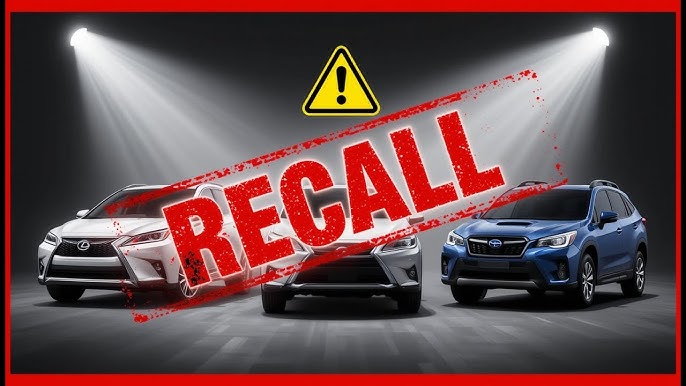Introduction
Toyota has once again made headlines with a large-scale recall involving Toyota, Lexus, and Subaru vehicles. The recall affects thousands of cars worldwide, primarily due to camera and safety-related malfunctions that could impact driver assistance systems. If you own one of these vehicles, here’s what you need to know about the recall, which models are affected, and how to get your car fixed.
Why Toyota Is Recalling Vehicles
The latest Toyota recalls cars announcement comes after internal testing and customer reports revealed potential defects in the rear-view camera system and related components. These defects could cause the backup camera image to display incorrectly or fail to appear altogether — posing a risk when reversing or parking.
The recall includes several Toyota models and extends to certain Lexus and Subaru vehicles manufactured in partnership with Toyota.
Models Potentially Affected
While specific lists vary by region, here are the major vehicle categories included in the Toyota, Lexus, and Subaru recall:
| Brand | Example Models | Issue Type | Production Years |
|---|---|---|---|
| Toyota | RAV4, Camry, Prius | Camera malfunction | 2021–2024 |
| Lexus | NX, RX | Display or camera wiring issue | 2021–2024 |
| Subaru | Solterra (co-developed with Toyota) | Rear-view camera failure | 2022–2024 |
Toyota has confirmed that authorized dealers will inspect and, if necessary, replace faulty camera components free of charge.
How to Check if Your Vehicle Is Affected
If you’re unsure whether your car is part of the recall, you can:
- Visit the Toyota Recall Lookup page on Toyota’s official website.
- Check your VIN (Vehicle Identification Number), usually found on your dashboard or registration documents.
- Contact your local Toyota, Lexus, or Subaru dealer for confirmation.
👉 For helpful tech and auto insights, visit Tech Adjudicator for regular updates on recalls and automotive technology.
What to Do if Your Vehicle Is Recalled
If your vehicle is confirmed to be part of the Toyota recall, here are the next steps:
- Schedule a service appointment with your dealership.
- Avoid relying solely on the rear-view camera until the issue is repaired.
- Keep documentation of all repair work completed.
Most repairs are completed in under an hour and are fully covered by Toyota.
Pros and Cons of the Recall Process
| Pros | Cons |
|---|---|
| Ensures long-term safety and reliability | Temporary inconvenience for owners |
| Repairs are free of charge | Service appointment wait times may vary |
| Maintains brand reputation | May lower resale value for affected models |
The Bigger Picture
The Toyota recalling vehicles initiative underscores the brand’s continued commitment to safety and transparency. Although recalls can be inconvenient, addressing these issues promptly prevents larger safety risks down the road.
As automakers increasingly rely on advanced driver-assistance cameras and sensors, even minor software or hardware issues can lead to widespread recalls — a growing challenge across the automotive industry.
Conclusion
If you own a Toyota, Lexus, or Subaru, it’s essential to check whether your car is part of the latest Toyota recalls cars list. Prompt action ensures your vehicle remains safe, compliant, and dependable.
Stay informed with the latest automotive updates and recall alerts by visiting Tech Adjudicator.

